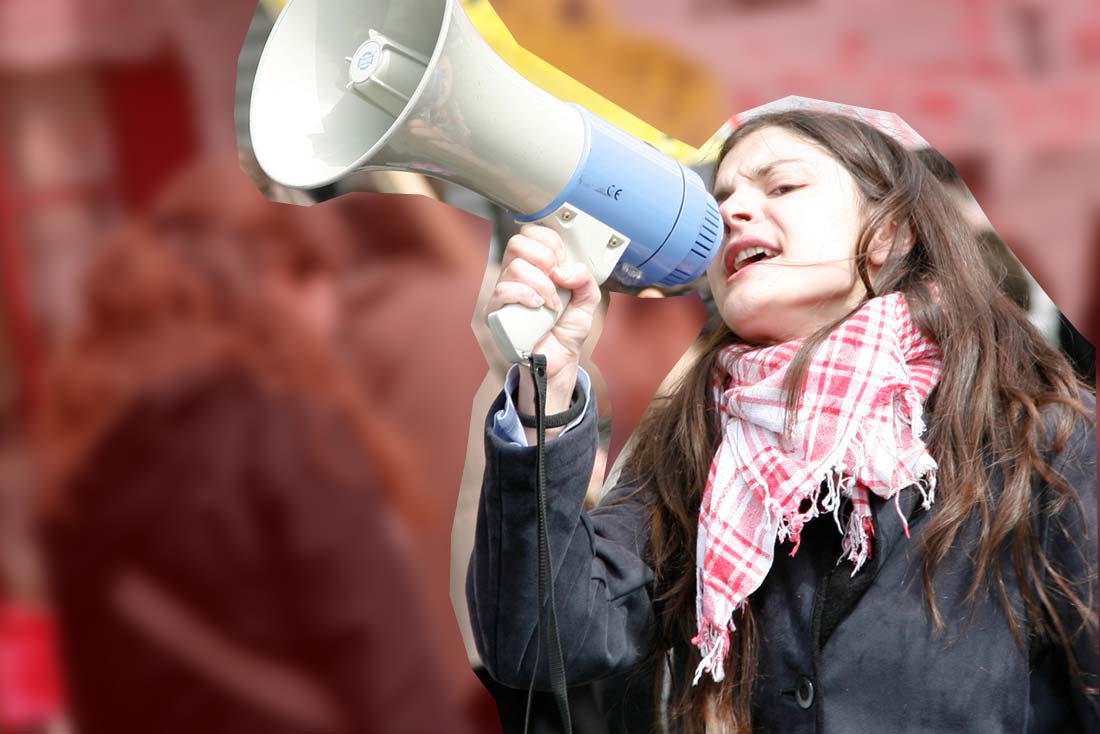
Every year from 25th November, campaigners mark the beginning of 16 Days of Activism against Gender-Based Violence: a now international campaign that culminates on Human Rights Day, to highlight and challenge the global violations of women and girls’ human rights at home, in public and in the world of work.

‘Gender based violence is a function of gender inequality, and an abuse of male power and privilege. It takes the form of actions that result in physical, sexual and psychological harm or suffering to women and children, or affront to their human dignity, including threats of such acts, coercion or arbitrary deprivation of liberty, whether occurring in public or private life. It is men who predominantly carry out such violence, and women who are predominantly the victims of such violence. By referring to violence as ‘gender based’ this definition highlights the need to understand violence within the context of women’s and girl’s subordinate status in society. Such violence cannot be understood, therefore, in isolation from the norms, social structure and gender roles within the community, which greatly influence women’s vulnerability to violence.’
Scotland’s definition of gender-based violence is based on the United Nations Declaration on the Elimination of Violence Against Women.
Gender based violence is fundamentally about power and control, which means that in a society that awards power and opportunity differently based on gender – in the favour of men, the majority of victims are women and girls. Due to the intrinsic link between gender-based violence and gender inequality, it is also a key factor that blocks progress towards women’s equality.
Although prevailing stereotypes such as ‘boys will be boys’ and harmful misreporting by the media may try to persuade us otherwise; there is nothing inherent, biological, or natural about men’s violence against women. Indeed, anti-violence organisations have long demonstrated that the everyday reproduction of harmful gender norms, coupled with systemic gender inequality is what enables GBV. Therefore, the good news is that what we have learned can also be unlearned. Paving the way for a more equitable understanding of gender and distribution of power will require us all to challenge those deep-rooted ideas that are, at the very least, doing a great disservice to our individual potential.
gender-based violence is not only physical violence but encompasses a range of harmful behaviours related to power and control
Crucial to our awareness raising is the understanding that gender-based violence is not only physical violence but encompasses a range of harmful behaviours related to power and control, that has emotional, physical, psychological and material consequences. Only when this is fully understood can we begin to unpack the often-invisible ways inequality is reproduced through everyday acts and begin to challenge them. In Scotland, police statistics suggest that between one in four and one in five women will experience domestic abuse in her lifetime. However, we know that statistics of incidents will never reveal the true scale of the problem, as the majority of GBV goes unreported.
The NHS recognises gender-based violence as a serious public health crisis that affects so many of our lives both directly, and indirectly. Although not all women will experience violence, as women are at greater risk simply due to their gender, most will, when reflecting back, recognise that they have adapted their lives in some way to minimise this risk. Whether it is avoiding walking home late at night or clutching keys, checking in on a friend after a blind-date, or changing the way you dress to avoid unwanted attention, these small acts are strategies women are taught to keep themselves safe and avoid victim-blaming. Feminist organisations have long called for a shift from “what was she wearing” to teaching young people of all genders about respect, and consent. Girlguiding Scotland reported that in 2018, a fifth of girls and young women in Scotland experience sexual harassment in school, College or University.
Although the number of cases relating to violence against women is overwhelming, it is important to recognise the risks of abuse facing LGBT people, and that it can happen to men and boys too. Some people are at higher risks of GBV, due to intersecting inequalities, for example, belonging to a minority ethnic group and facing racism as a barrier to accessing support services, being disabled and dependent on care from a partner, or being transgender. In 2018, Stonewall found that two in five trans people had experienced a hate crime or incident because of their gender identity in the last year.
Despite its prevalence, gender-based violence is almost solely spoken about either as a private embarrassment, or an evil lurking stranger, rather than as a significant human rights issue, and a public health crisis that affects us all.
As teachers, we have a role to play in making sure that when these conversations happen, we get it right. The EIS guidance Get it Right for Girls provides a comprehensive overview of the relationship between gender inequality, misogynistic attitudes, and violence against women. The resource has a range of suggested strategies for addressing these issues within your educational setting.
If you are concerned about yourself or someone else, you can contact:
- Scotland’s Domestic Abuse and Forced Marriage 24 Hour Helpline: helpline@sdafmh.org.uk / 0800 027 1234
- Rape Crisis Scotland Helpline Phone: support@rapecrisisscotland.org.uk / 08088 01 03 02
- Scottish Women’s Rights Centre: info@scottishwomensrightscentre.org.uk / 08088 010 789
Resources
The Zero Tolerance guide on Gender equal play in early learning and childcare
www.zerotolerance.org.uk/resources/Gender-Equal-Play-in-Early-Learning-and-Childcare.pdf
The Speaking Out learning resource is developed for secondary schools to engage pupils in discussions about gender inequality and domestic abuse through exploring the activism of the Women’s Aid movement.
